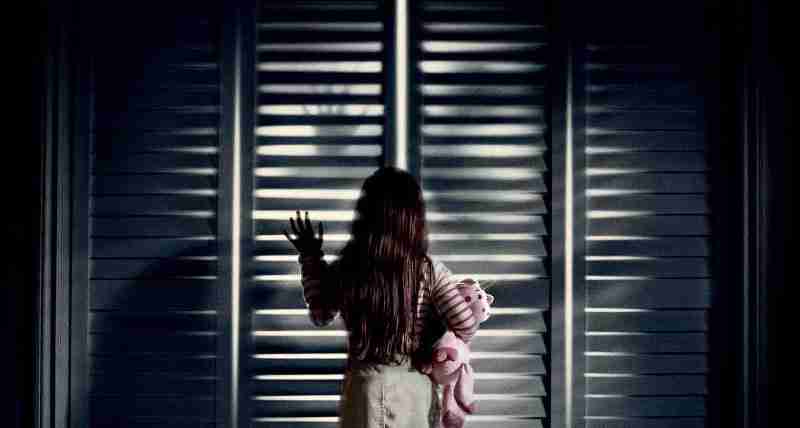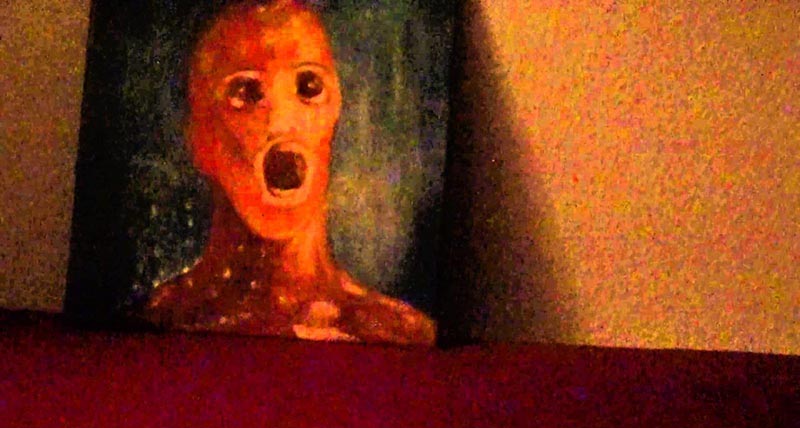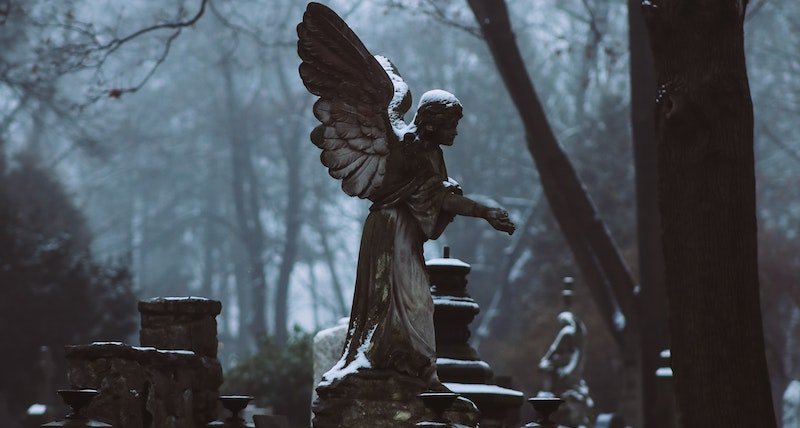When it comes to the paranormal world, few entities evoke as much curiosity and fear as poltergeists.
Can they be dangerous? At times, yes. Can they be controlled or banished? Perhaps, depending on individual circumstances and belief systems. Should they be feared? That’s a subjective question that each individual must answer for themselves.
As we continue our investigations into the paranormal world, one thing is sure: the mystery of poltergeists will continue to captivate and challenge us for generations to come.
Table of Contents
Introduction to Poltergeists
A German term, “poltergeist” combines “poltern,” meaning to make sound or to rumble, and “geist,” referring to a ghost or spirit.
But what is a poltergeist, and why does this phenomenon captivate our collective imagination?
At its core, a poltergeist represents a type of supernatural being allegedly responsible for physical disturbances such as loud noises and objects being moved or destroyed.
Their activity might be subtle in some cases, while it’s utterly chaotic and disruptive in others. Often perceived as mischievous or malevolent, poltergeists have been at the center of numerous accounts of hauntings worldwide.
Moreover, poltergeists can supposedly manifest anywhere but are typically associated with particular individuals or locations.
Yet, they’re not simply ‘noisy ghosts.’ In the paranormal taxonomy, they hold a unique position that differs from other spectral entities, a topic we’ll delve into further in the second part of this article.
Poltergeists vs. Other Entities
If you have a rudimentary understanding of the paranormal world, you might be inclined to use the terms ghost and poltergeist interchangeably. However, these are distinctly different entities within the domain of supernatural phenomena.
Let’s delve into the core distinctions:
Ghosts
Ghosts, the more common term, generally refer to the spirits or souls of deceased individuals that, for some reason, have remained attached to the earthly plane.
They are typically characterized as silent observers, often tied to specific locations, especially places where they once lived or died.
Some might interact with the living, but their manifestations are usually subtle, often visual or auditory, like apparitions or unexplained sounds.
Poltergeists
On the other hand, poltergeists are primarily defined by their noisy, disruptive behaviors. They manifest through physical interactions, like moving objects, causing spontaneous fires, or even inflicting harm on living creatures.
On the same topic: The Glenluce Devil: The Tale of a Powerful Poltergeist in 17th Century Scotland
Unlike ghosts, their activity is less about visual presence and more about tangible, sometimes aggressive actions.
Interestingly, poltergeist phenomena often center around a particular individual, usually undergoing emotional distress.
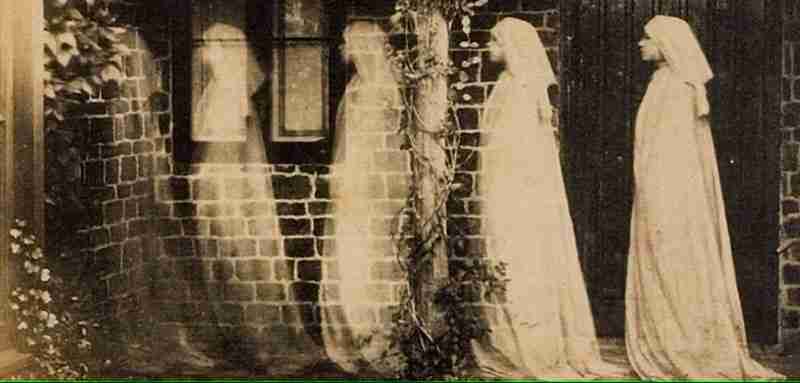
Other Supernatural Phenomena
Now, consider entities like demons or elementals. These are deemed non-human spirits with varying degrees of malevolence and power. They exhibit various phenomena, from subtle influence to outright possession.
However, their activity patterns and goals seem vastly different from those of a poltergeist.
So, how do we differentiate a poltergeist from a ghost or any other supernatural entity?
In essence, when considering the poltergeist vs. ghost debate, remember this: while all poltergeists may be spirits, not all spirits are poltergeists.
So, are we simply dealing with ‘noisy ghosts,’ or is there more to the poltergeist phenomenon than meets the eye?
For a better understanding of different paranormal manifestations, here’s a simple comparison table for different types of such occurrences:
| Type of Manifestation | Intensity | Frequency | Likely Cause | Who Can Help |
|---|---|---|---|---|
| Apparitions | Low | Rare | Often associated with a deceased individual, usually appearing in a place they were connected to in life. | Paranormal investigators, mediums |
| Residual Hauntings | Low-Medium | Can be frequent, often occurring on a loop. | Believed to be a “recording” of past events imprinted on the environment. | Paranormal investigators, cleansing rituals |
| Intelligent Hauntings | Medium | Varies, often responsive to living people. | Believed to be the spirit of a deceased individual who is aware of their surroundings. | Paranormal investigators, mediums, religious figures for blessing or exorcism |
| Poltergeists | High | Can be frequent and intense. | Often associated with a living individual under stress, particularly adolescents. Some believe they are mischievous spirits. | Paranormal investigators, psychologists, religious figures for blessing or exorcism |
| Demonic Hauntings | Very High | Rare, but can be persistent and escalating when they occur. | Believed to be caused by non-human, malevolent entities. | Religious figures experienced in exorcism, some paranormal investigators |
Please note that this table is based on popular beliefs and theories within the field of paranormal research, and not on scientifically proven facts. The field is highly subjective, and experiences can vary greatly.
The Nature and Behavior of Poltergeists
Understanding the nature and behavior of poltergeists can be as elusive as the entities themselves. Their manifestations are unique, often blending the line between the explainable and the inexplicable.
Related: The Anguished Man: The Haunting Tale of a Cursed Painting
But what are the typical signs of a poltergeist haunting? And how can we determine the potential dangers posed by these spectral mischief-makers?
Typical Poltergeist Activity
Poltergeist activity is, by nature, disruptive and physical. It frequently involves objects being mysteriously moved, thrown, or broken – doors may slam shut, lights flicker, or dishes might fly off the shelves.
In more extreme cases, poltergeists have been reported to produce violent phenomena like starting fires, causing water leaks, or even inflicting harm on individuals through scratches, bites, or hits.
Moreover, these events often occur in bursts, followed by periods of inactivity. This “burstiness” and randomness in activity add to the mysterious nature of poltergeist phenomena.
The Effect of Poltergeist Encounters on Individuals and Households
Poltergeist encounters have the potential to instill a sense of fear and dread within a household. The targeted individuals often report feeling watched or followed, experiencing sleep disturbances, and sometimes suffering physical discomfort or harm.
Interestingly, poltergeist activity is often centered around one individual, typically an adolescent or someone experiencing high emotional stress.
Why? This is one of the mysteries we’ll attempt to unpack in the next part of this article.
The Possible Danger of Poltergeists
But before we do that, there are a couple more important questions:
- Are poltergeists dangerous?
- Can they cause physical harm?
While most poltergeist hauntings tend to be more of a nuisance than a threat, there have been accounts of individuals being physically harmed or property significantly damaged.
Such relatively rare incidents indicate that, under certain circumstances, poltergeists could pose a real threat.
Interesting reading: The True Story of the Real Annabelle Doll: Fact vs. Fiction
Furthermore, the emotional and psychological stress caused by enduring a poltergeist haunting should not be underestimated. The unpredictability of the events can lead to a state of perpetual fear and anxiety, which could have severe long-term effects.
In summary, while poltergeist activity can vary, it’s primarily characterized by inexplicable physical disturbances and a solid connection to a particular individual.
If you notice such phenomena, it’s crucial to approach the situation calmly and rationally, armed with as much knowledge as possible.
Theories and Explanations Behind Poltergeists
The enigma of poltergeists has intrigued scientists, psychologists, and paranormal enthusiasts for centuries. From scientific theories to folklore and legends, the explanations behind these noisy spirits are as varied as they are fascinating.
Scientific Explanations for Poltergeist Phenomena
Scientifically speaking, can we rationalize poltergeist phenomena? Some researchers propose explanations grounded in physics, like electromagnetic fields and infrasound.
For instance, certain environmental factors can create sensations of unease, fear, or even hallucinations, which might be misinterpreted as paranormal activity.
Others suggest the concept of ‘quantum superposition’ – the idea that objects can be in two places at once until observed – could theoretically explain the spontaneous movement of objects associated with poltergeists.
However, this remains a fringe theory and is not widely accepted.
“The Secret History of Poltergeists and Haunted Houses: From Pagan Folklore to Modern Manifestations,” written by Claude Lecouteux, is an excellent resource for those looking to dive deeper into the poltergeist phenomenon.
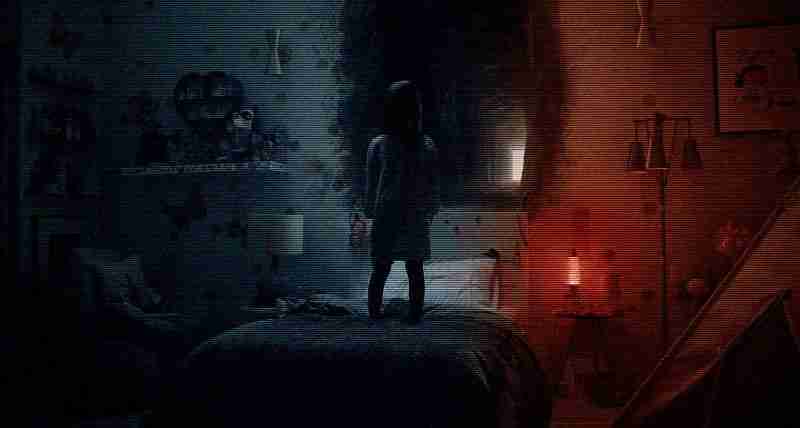
The Psychology Behind Poltergeist Manifestations
From a psychological perspective, poltergeist manifestations are often associated with individuals under extreme stress or psychological strain.
This theory, known as ‘recurrent spontaneous psychokinesis’ (RSPK), posits that the individual unconsciously manipulates physical objects using their mind, leading to the perceived poltergeist activity.
Folklore, Legends, and Popular Culture References
Poltergeist folklore is rich and varied, reflecting cultural perspectives on these supernatural phenomena. In many cultures, poltergeists are believed to be spirits, often malicious or mischievous, with a penchant for creating havoc.
Furthermore, poltergeists have become popular subjects in movies and literature, most notably in the iconic 1982 film “Poltergeist,” which painted a terrifying picture of a family haunted by vengeful spirits.
Insights from Poltergeist Research and Investigations
Paranormal investigators approach poltergeist investigations armed with various tools, from digital recorders to capture electronic voice phenomena (EVP) to electromagnetic field (EMF) detectors.
However, solid evidence of poltergeists remains elusive and often disputed.
Though there’s no definitive explanation for poltergeist activity, the topic continues to be a subject of avid debate and investigation. From physics and psychology to folklore and film, poltergeists inhabit a unique intersection of the scientific and the supernatural.
I recommend reading “The ‘Brother Doli’ Case: Investigation of Apparent Poltergeist-Type Manifestations in North Wales” by Michael Daniels for more information on the topic.
Dealing with Poltergeists
When faced with inexplicable phenomena, keeping a cool head and approaching the situation with scientific inquiry and respectful caution is crucial.
How to Protect Yourself from Poltergeist Encounters
Protection from poltergeist encounters begins with understanding and education. It’s essential to remain calm and not let fear or panic take over. Many cultures and spiritual practices suggest the use of protective charms or rituals.
However, the efficacy of such methods is mainly subjective and often dependent on personal belief systems.
You may also like: The Ghost of Anne Boleyn: Exploring Britain’s Most Famous Spectral Queen
In a situation where the activity is causing significant distress, seeking professional help, either from mental health experts or reputable paranormal investigators, might be beneficial.
In addition to the initial steps mentioned above, you can employ several other strategies to protect yourself from poltergeist encounters.
Here are some further helpful tips:
- Create a Positive and Harmonious Environment: Maintaining a positive and harmonious atmosphere in your home can help deter negative energies and potential poltergeist activity. Foster a sense of peace and unity among family members, avoid conflicts, and promote a generally positive ambiance.
- Cleanse and Purify Your Space: Many spiritual traditions suggest using cleansing rituals or ceremonies to rid your home of negative energies. This can involve smudging with sage, burning incense, or using blessed water or salt to purify the space. The intention behind these practices is to create an environment that is less susceptible to paranormal disturbances.
- Set Clear Boundaries: Poltergeist activity can sometimes be associated with unresolved emotional issues or conflicts within a household. Setting clear boundaries and addressing any underlying emotional tensions can help alleviate the conditions that may contribute to such experiences.
- Strengthen Your Energy Field: Many individuals believe that strengthening their energy field can make them more resistant to external influences. Engage in meditation, visualization, or energy healing techniques to enhance your energy and create a protective shield around yourself.
- Seek Spiritual or Religious Guidance: If you are religious or have specific spiritual beliefs, consulting with a religious leader or spiritual guide can provide guidance and support. They may offer prayers, blessings, or rituals that align with your beliefs and help ward off negative energies.
- Use Protective Objects: Some people find comfort in using protective objects, such as crystals, amulets, or religious symbols, to ward off negative energies. These items possess specific properties that can provide protection and promote positive energy.
- Maintain a Support System: Sharing your experiences with trusted friends, family members, or support groups can provide emotional support and validation. Connecting with others who have faced similar encounters can offer insights, advice, and a sense of belonging.
- Practice Self-Care: Taking care of your physical, mental, and emotional well-being is crucial when dealing with any challenging situation. Engage in activities that bring you joy, relaxation, and peace. This can include exercise, hobbies, spending time in nature, or seeking professional counseling if needed.
Remember, while these suggestions may help create a sense of protection and empowerment, individual experiences with poltergeist encounters can vary greatly.
It’s essential to find what resonates with you personally and adapt these strategies accordingly.
If the activity persists or intensifies despite your efforts, seeking professional help from experts in the field of paranormal phenomena or mental health can provide further assistance and guidance.

How to Get Rid of a Poltergeist in Your Home
Ridding your home of a poltergeist can be a challenging endeavor. If the phenomenon is associated with an individual undergoing high emotional stress, therapeutic interventions might help alleviate the activity.
In cases where the activity persists, consulting with professional paranormal investigators or spiritual practitioners could provide relief.
It’s crucial to ensure these individuals or groups are reputable and prioritize the safety and well-being of those involved.
Distinguishing Genuine Poltergeist Activity from Hoaxes
Unfortunately, not all poltergeist stories are genuine. Numerous hoaxes have been made over the years, often designed to generate fear or garner attention.
Critical thinking and skepticism are crucial tools when evaluating poltergeist activity.
Look for consistent patterns, corroborating witness testimony, and any possible mundane explanations for the phenomena.
In our age of digital manipulation, photographic or video ‘evidence’ should always be treated with caution.
Stories of Famous Poltergeist Hauntings
The world of poltergeist hauntings is rife with captivating tales, some of which have achieved near-mythic status.
One of the most infamous cases is the Enfield Poltergeist in the late 1970s in London.
One of the most infamous and well-documented cases of poltergeist activity is the Bell Witch Haunting, which occurred in early 19th century Tennessee. The haunting revolved around the Bell family, who claimed to be tormented by a malevolent entity that became known as the Bell Witch.
The haunting began in 1817 when John Bell, the family’s patriarch, encountered a strange creature in his field. Shortly after, unexplained phenomena plagued the Bell household.
The family members reported hearing eerie noises, such as scratching sounds on the walls, knocking on doors, and even the sound of chains being dragged across the floor.
You may also like: Robert the Doll: The True Story Behind World’s Most Haunted Doll
The children were particularly targeted, enduring physical attacks that left them bruised and scratched.
The entity, believed to be the spirit of a woman named Kate Batts, eventually communicated with the family, displaying an uncanny knowledge of their private conversations and events.
It often conversed with family members, recited Bible verses and hymns, and even sang haunting melodies. The entity claimed responsibility for John Bell’s deteriorating health, eventually leading to his death in 1820.
The Bell Witch Haunting attracted considerable attention, with curious visitors and even prominent figures, such as General Andrew Jackson, seeking to witness the phenomenon firsthand.
The case was extensively documented by several newspapers, including the Nashville Republican, which published numerous articles detailing the events.
Frequently Asked Questions
What is the definition of a poltergeist?
A poltergeist is a supernatural entity characterized by noisy, disruptive physical phenomena, often centered around a specific individual.
How do poltergeists differ from other types of ghosts?
Poltergeists are primarily known for their physical activity – moving or throwing objects, making loud noises, etc. – distinguishing them from other ghostly apparitions.
Are poltergeists dangerous?
While most poltergeist activity is more disruptive than harmful, there have been instances of poltergeists reportedly causing physical harm or damage.
Can poltergeists cause physical harm?
There are accounts of poltergeists inflicting physical harm, though such instances are relatively rare.
How long do poltergeist hauntings typically last?
Poltergeist hauntings can last anywhere from a few days to several years, though they typically occur in bursts with periods of inactivity.
Can poltergeists be captured or controlled?
There’s no definitive answer to this, as it depends mainly on individual beliefs and experiences. Some people report success with various methods, while others find the activity persists regardless of their efforts.
Are poltergeists associated with specific locations?
While poltergeist activity is often associated with specific locations, it’s also frequently tied to a particular individual.
Do poltergeists target individuals or households?
Poltergeist activity often appears to be centered around a specific individual, typically an adolescent or someone experiencing high emotional stress.
Are poltergeist encounters more common in certain cultures?
Poltergeist encounters are reported across various cultures, although interpretations of the phenomena can vary significantly based on cultural context.
Can skeptics or non-believers experience poltergeist phenomena?
Skeptic or not, anyone can potentially experience poltergeist phenomena. However, skeptics may be more likely to seek out rational explanations for the activity.
Sources
- Joe Nickell – The Science of Ghosts: Searching for Spirits of the Dead. Prometheus Books, 2012.
- A.R.G. Owen – Can We Explain the Poltergeist? Garrett Publications, New York, 1964.
- Christopher Milbourne – ESP, Seers & Psychics. Thomas Y. Crowell Co., 1970.
- Frank Podmore – Poltergeists. Proceedings of the Society for Psychical Research. 1896.
- James Houran and Brian Laythe – Case Study of Recognition Patterns in Haunted People Syndrome. [Source]

